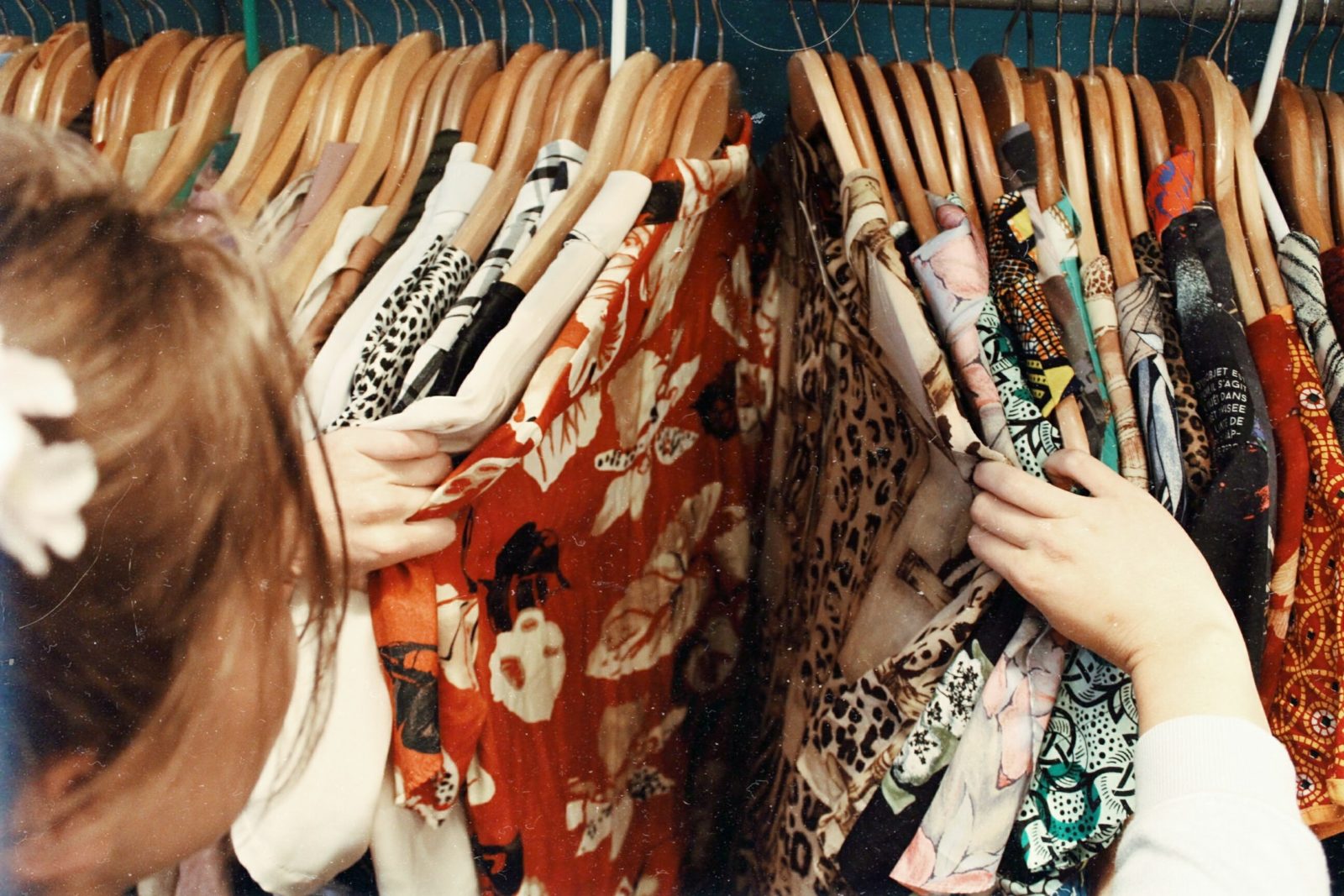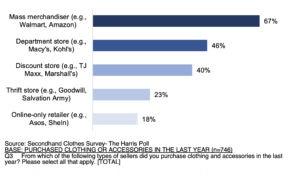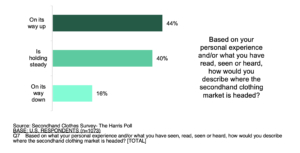Brief • 2 min Read

Is secondhand clothing the next big thing?
Clothes are a purchase that everyone makes, and where one buys clothes has several important implications. From rapidly reproducing designs to cutting down manufacturing costs (sometimes at the expense of working conditions), fast fashion and big-box retailers have an outsized influence on the impact that the clothing industry has on the broader economy. While these stores are among the most popular, there is an alternative that could gain traction among shoppers: resellers.
New data from The Harris Poll shows that secondhand retailers (like thrift stores) lag behind mass market stores in terms of popularity. Only a quarter (23%) of consumers who bought clothing in the last year shopped at a thrift store, compared to 63% who shopped at a mass market retailer. That said, secondhand clothing has potential to become a staple for shoppers. The resale market is largely seen as established; four in five U.S. adults (84%) think it’s on its way up or holding steady. Additionally, two-thirds (62%) agree that wearing vintage clothes is trendy.

Why secondhand is worth the shop
Currently, cost is the most frequently cited reason that customers point to when deciding to shop secondhand. Seven in ten (70%) secondhand clothing shoppers say that they purchase thrifted clothing to save money and 37% do so because it helps give them the biggest bang for their buck. Beyond that, 31% are drawn to the market because of the excitement they feel when searching for unique items. This could be a big competitive advantage for secondhand resellers looking to market to an audience that is interested in one-of-a-kind clothing finds.

Why secondhand could still flop
However, ambivalence is a big challenge that could stand in the way of secondhand clothing retailers. A noteworthy number (33%) of consumers who haven’t bought secondhand clothes in the last year say they simply don’t feel the need to. Convenience is also a factor. One-fifth (19%) of people who haven’t bought secondhand clothes in the last year say that it’s too much work to search for them and 14% say it’s more convenient to buy new clothes.
Stay tuned…
While most consumers aren’t currently looking to thrift stores to find their next favorite outfit, they have plenty of reasons to shop secondhand. Resellers are often seen as offering unique, eco-friendly items for shoppers on a budget – considerations that may help the broader resale clothing market enter the mainstream. In our upcoming series, we’re going to dive deeper into the perks and pitfalls consumers consider when deciding whether to shop secondhand and the strategies resellers and mass market retailers can use to capitalize on the resale trend.
This survey was conducted online in the United States by The Harris Poll from June 24, 2022 to June 27, 2022 among 1,073 respondents. Figures for age, sex, race and ethnicity, education, region, household income, and propensity to be online have been weighted where necessary to bring them into line with their actual proportions within the US population. Respondents for this survey were selected from a pool of potential respondents who have agreed to participate in The Harris Poll’s online research. For this study, the sample data is accurate to within +/- 4.0 percentage points using a 95% confidence level. For more information, please contact Madelyn Franz, or Andrew Laningham.
Subscribe for more Insights
Subscribe to our newsletter for the latest trends in business, politics, culture, and more.
Download the Data
INT_Secondhand clothes_Data
Download
Subscribe for more Insights
Subscribe to our newsletter for the latest trends in business, politics, culture, and more.
Download the Data
INT_Secondhand clothes_Data
DownloadRelated Content








